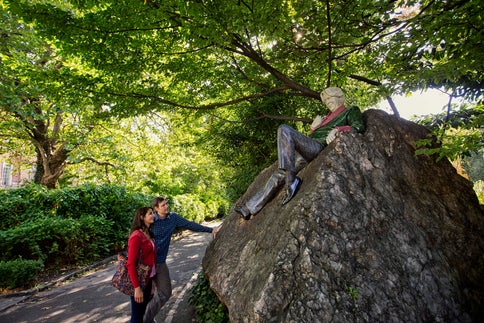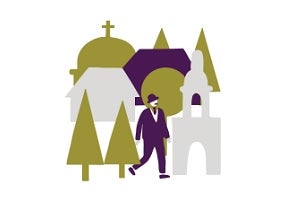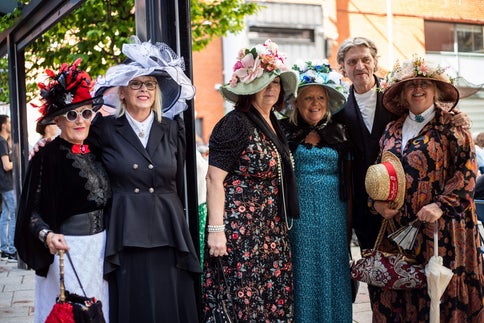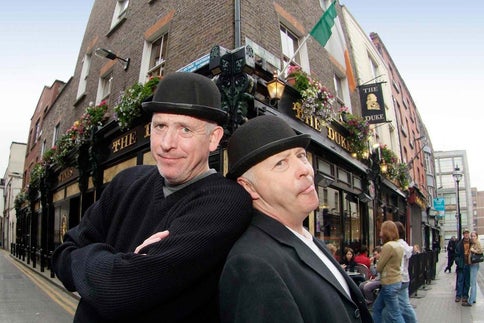- Home
- Traveller guides
- The James Joyce tour of Dublin
Explore James Joyce's Dublin


It is said that if Dublin ever disappeared, you could rebuild it through the words of one of its most celebrated sons, James Joyce.
It’s true, even if the person who said it was Joyce himself. An excellent self-publicist, Joyce understood the city with his heart as well as his mind.
“I’m crazy about Dublin,” he said, although he would finally leave in 1912, never to return. Perhaps a clue to his exile lies in his short stories. “Real adventures, I reflected, do not happen to people who remain at home: they must be sought abroad,” says the narrator of An Encounter, one of the 15 short stories in Dubliners.
Today’s Joyce devotees can find their adventures in Dublin, so where does our James Joyce tour Dublin begin, and which James Joyce landmarks might we see?
Joyce’s early years
We start at 41 Brighton Square in the leafy suburb of Rathgar, where James Augustine Joyce was born on February 2, 1882. He was the eldest of ten surviving children, and the large family would move many times, a habit he maintained through his life. Rathgar is a lovely residential part of Dublin, where the only real changes wrought by time are the electric street lamps replacing the old gas lighting and the vintage of the motorcars. You might also notice that Brighton Square is really more of a triangle, a detail that wouldn’t have been lost on Joyce.
From there, the family went to another redbrick spot at 23 Castlewood Avenue in Rathmines, an easy walk from the city centre and close to the Grand Canal. These days the suburb is one of the busiest in the city, full of shops, bars, and restaurants to explore (be sure to visit the marvellous Art Deco Stella Cinema, which dates from 1923).
Next stop: the seaside town of Bray, just across the county line in Wicklow, where the young James was attacked by a dog, leading to a lifelong fear of canines. James was also petrified of thunderstorms, thanks to a superstitious aunt who told him they were caused by the wrath of God. When writing Finnegans Wake, James invented a 100-letter word to describe a thunderclap: Bababadalgharaghtakamminarronnkonnbronntonnerronntuonnthunntrovarrhounawnskawntoohoohoordenenthurnuk. Stand out in a storm and try it yourself!
Further family ramblings included addresses both north and south of the city, in Drumcondra and Blackrock, while his university years were lived in Clontarf and Fairview. No wonder he got to know Dublin so well!
Joyce’s university was in Newman House on St. Stephen’s Green, now MoLI, the Museum of Literature Ireland, where you can soak up stories of Joyce and other famous Irish writers, including Yeats, Kavanagh, Lavin and Heaney. The museum has a lovely café and you can also get your photograph taken under the same ash tree where Joyce’s graduation photo was taken in 1902.
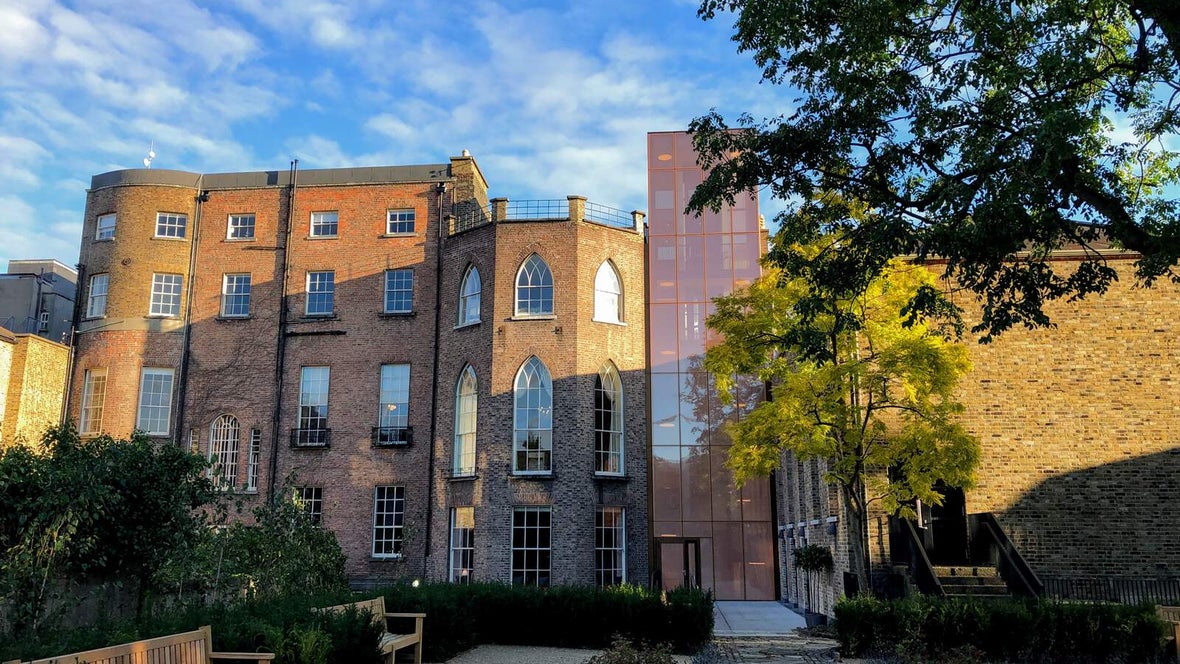
Bloom’s route through Dublin
Everything changed for James Joyce in 1904. On June 16 of that year he had his first date with Nora Barnacle, who would become his muse and later his wife. The date had been set for June 14, but Nora stood him up: if she hadn't, Leopold Bloom's meanderings in Ulysses would have taken place two days earlier than June 16, which we now know as Bloomsday. Still, a 700-page masterpiece that immortalises your first date with the love of your life is quite the romantic gesture!
You can follow Bloom's ramblings with a Footsteps of Leopold Bloom Tour from the James Joyce Centre, visiting Sweny’s Pharmacy (where daily Joycean readings are held, in English as well as other languages), the National Library, MoLI and other sites associated with Dublin’s best known wanderer.
Part of the reason Joyce’s works feel so real is that he melded fact with fiction throughout. Indeed, many of the characters in Ulysses are based on people in Joyce’s life. ‘Stately plump Buck Mulligan’ who opens the novel is modelled on writer and politician Oliver St. John Gogarty, with whom he shared a house in a Martello tower in 1904. And so it is that Mulligan lives in the same tower in Sandycove with Stephen Dedalus and Haines. Fittingly, the tower is now a museum dedicated to the author.
Joyce’s writing encompasses all of human life, so don’t forget a visit to Glasnevin Cemetery where both Ulysses characters and Joyce’s own father are buried. It is a remarkable and fascinating spot, with excellent guided walking tours.
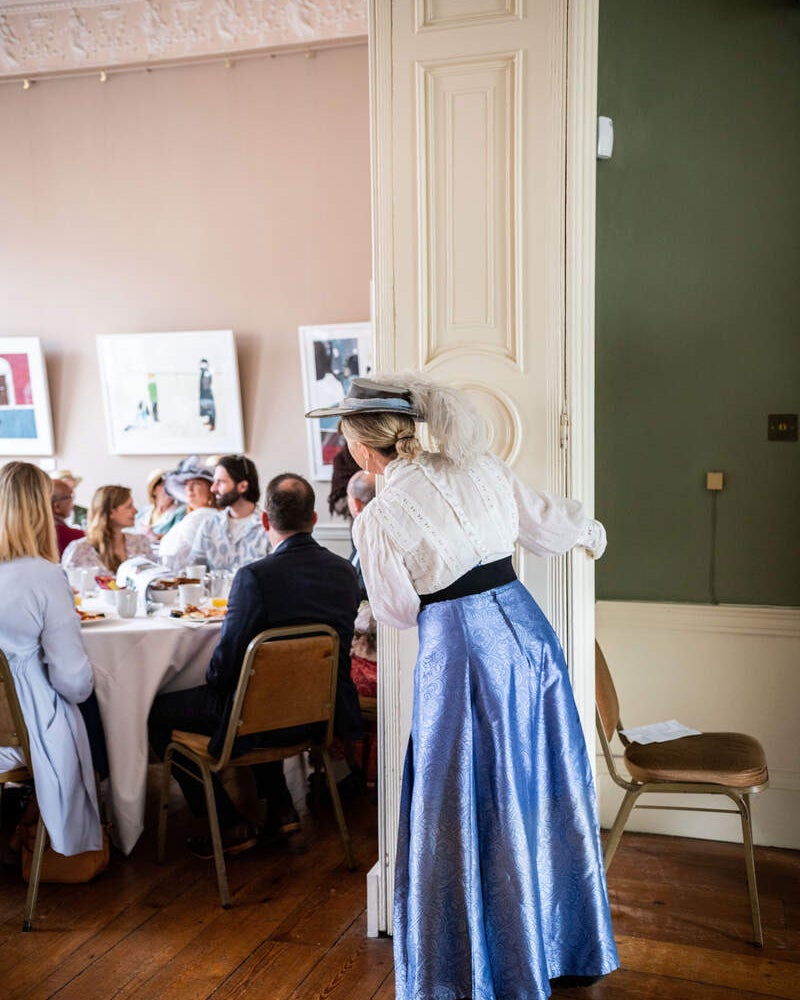
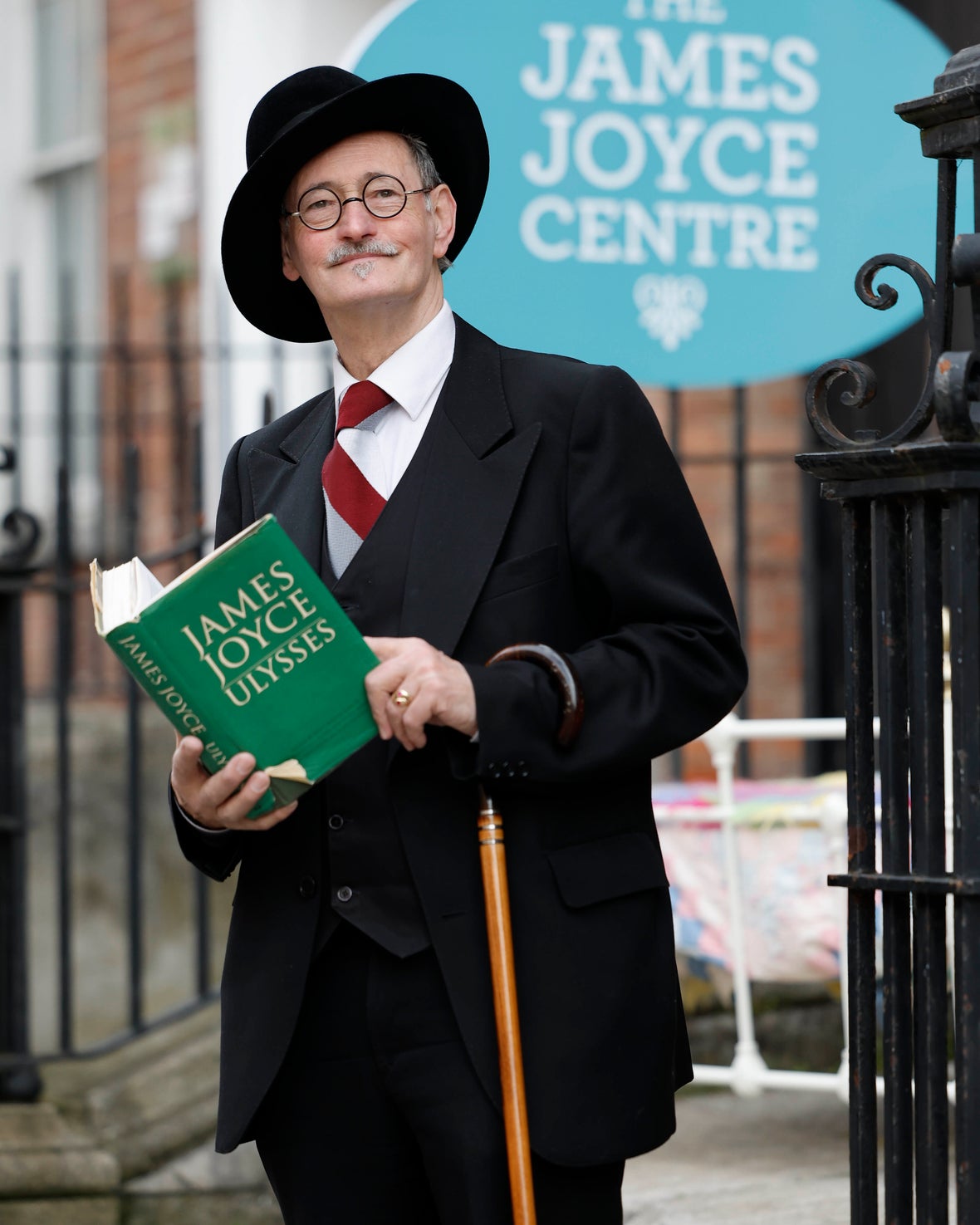
Joyce's pubs
Joyce would hardly do justice to Dublin if he didn’t write about its pubs. Indeed, pubs are so central to his writing that Leopold Bloom remarked in Ulysses that a “good puzzle would be to cross Dublin without passing a pub.” It has been tried, but why would you? Many of the pubs Joyce wrote about are still there as living literary history, and you can visit them just as the author and his characters did.
Ulysses’ most famous pub mention is Davy Byrnes on Duke Street, the "moral pub" described as a “nice quiet bar. Nice piece of wood in that counter.” It’s not as quiet as it used to be, but the nice piece of wood is still there and you can still order a gorgonzola sandwich to go with your glass of Burgundy, just as Leopold Bloom did. The pub also makes an appearance in the short story Counterparts from Dubliners, when the office clerk Farrington goes in for a drink after arguing with his boss.
Other pubs mentioned in Ulysses include the International Bar on Wicklow St, which in Joyce’s day was called Ruggy O’Donohoe’s. The professor and Myles Crawford have a deep conversation in the Victorian Oval Bar on Middle Abbey Street, which was completely rebuilt after it was destroyed during the 1916 Rising. In Chapter 5 of Ulysses, Bloom meets McCoy in Conway’s on Westland Row, now known as Kennedy’s.
If Davy Byrne’s is the best known pub in Ulysses, Mulligans of Poolbeg Street can stake a claim to being the pub most intimately associated with Joyce himself. He was a regular here for a while, and Joyce immortalised his connection in the story Counterparts from Dubliners. When John F Kennedy visited Dublin in the 1950s, he went to Mulligans just so he could sit on the same stool as Joyce.
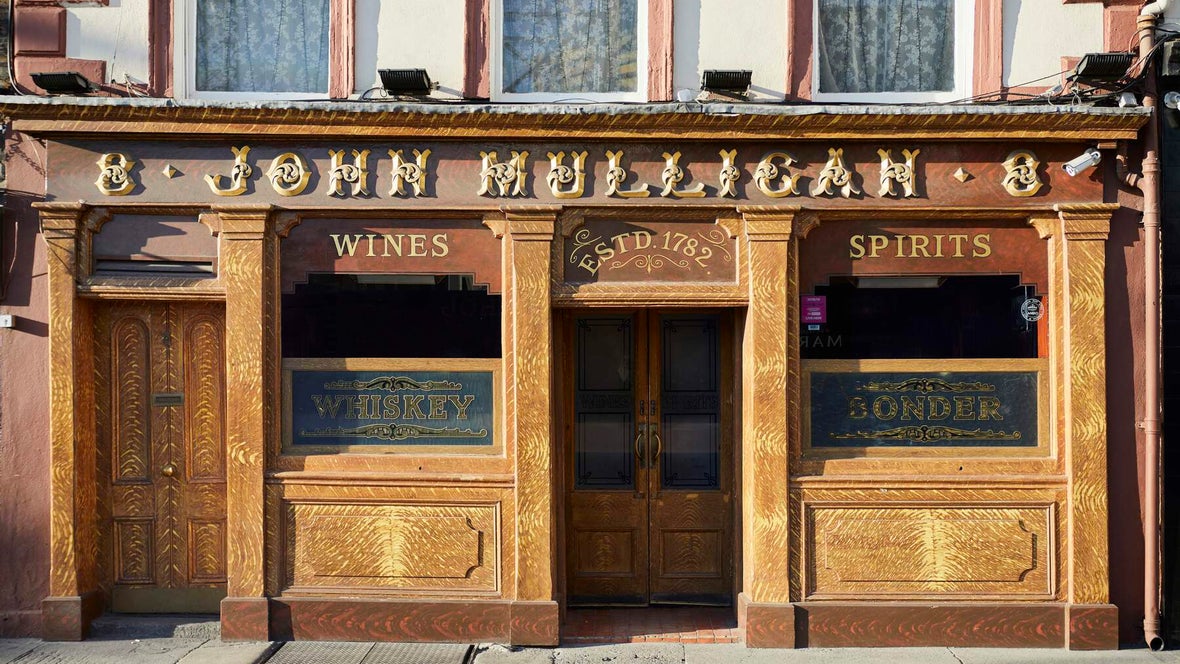
The Dublin of Dubliners
Ulysses might be the most famous, but Joyce’s earlier book of short stories from 1914, Dubliners, is more accessible and much more widely read. The 15th and final story, The Dead, has been said to be the most perfect short story in literature, and was made into a remarkable film in 1987 by John Huston, starring his daughter, Angelica Huston. Joyce set the story in a Georgian terraced house once lived in by his great-aunts at 15 Usher’s Island on the south quays. You can’t visit the house but it’s easy to spot as it’s directly opposite the modern Joyce Bridge, designed by Spanish architect Santiago Calatrava.
Like Ulysses, Dubliners paints a realistic portrait of Dublin life in the early part of the twentieth century. You can join Introducing Joyce's Dublin Walking Tour organised by the James Joyce Centre, which will take you to some of the relevant locations in the stories and put them in their appropriate context. Or you could go at it alone, pick a location and read the connected story.
Try a café on Crow Street in Temple Bar to read Grace, although ever the stylist, Joyce located Tom Kernan’s office on ‘Crowe’ Street. In Two Gallants, Lenehan and Corley cross the street in front of the Shelbourne Hotel before walking alongside St Stephen’s Green, so what better spot to read that story than in the lounge of one of the city’s most famous hotels?
Find a nice café on Suffolk Street for your perusal of Ivy Day in the Committee Room, where the fictional conspirators meet. There you’ll also see the famous Molly Malone statue; and speaking of statues, James Joyce died in 1941, and while those looking for his grave will find it in Zurich rather than Ireland, head to North Earl Street in Dublin where you can admire Marjorie Fitzgibbon’s statue of the man himself and learn more about Joyce's life through Dublin's Talking Statues audio guide. The statue was unveiled on June 16, 1990. Bloomsday of course!
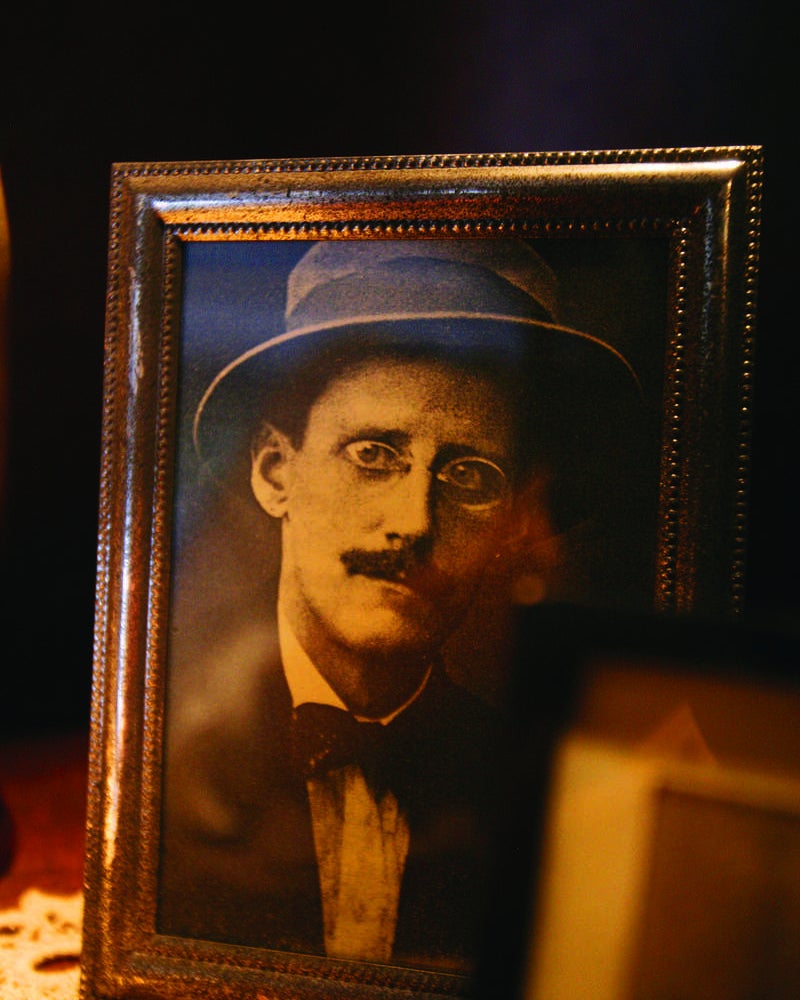

Dublin's rich literary legacy
Want to explore Dublin through the lives of other writers? Here’s our guide to Dublin’s rich literary legacy.
